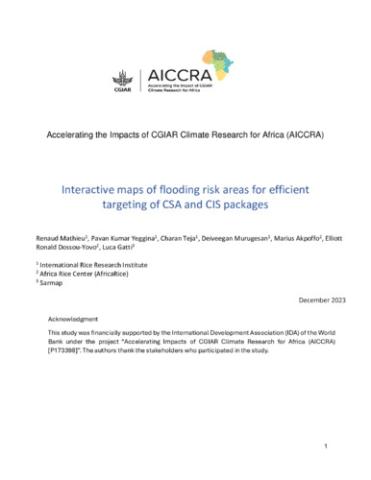Abstract
With the rise in flood occurrences in recent years, conducting precise flood risk assessments has become a crucial aspect of mitigating floods in agricultural regions. This study aims to generate updated and precise flood risk maps specifically tailored to rice-based systems in Mali. Historical flood and flood indicator maps spanning from 2018 to 2022 were generated using multi-temporal Synthetic Aperture Radar (SAR) satellite images covering the Sikasso and Segou regions, recognized as significant agricultural production areas in Mali. The identification of flood-sensitive rice areas was accomplished through a comprehensive analysis of historical floods in the study area, yielding flood indicators such as flood count and frequency on both monthly and yearly scales. These flood indicators contribute to a better comprehension of when flood events occur during the season, distinguishing between early and mid-season occurrences, and shedding light on their impact on crop development and farming practices. The findings indicate that early-season flood occurrences are unlikely to adversely affect crop growth; instead, they are utilized as beneficial agronomic floods for rice transplanting. In contrast, mid-season flood events from September to November in both irrigated and rainfed rice areas have the potential to inflict severe damage on rice crop growth and yield, particularly as the rice crops are already in the reproductive phase. The methods and results from this study provide a foundation for conducting thorough risk analyses and devising flood management strategies. This includes the dissemination of rice varieties and technologies that are resilient to flooding in regions susceptible to flooding occurrences.

